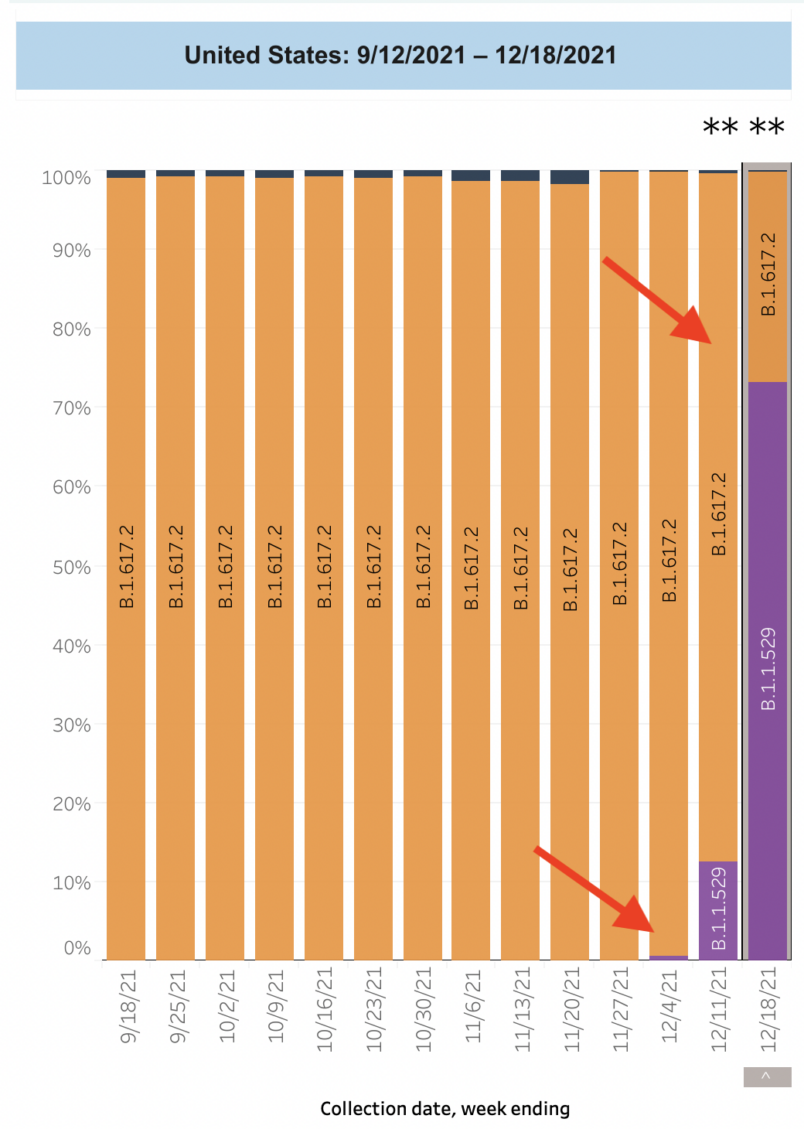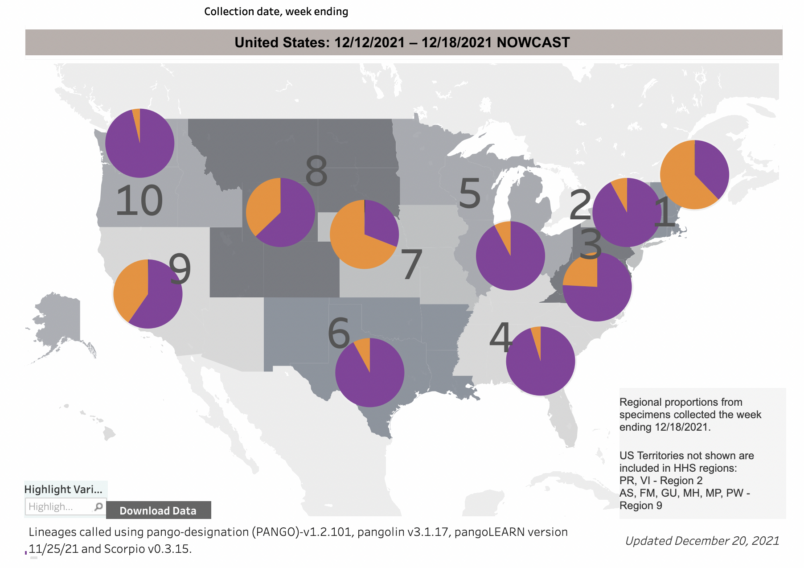These numbers almost beggar belief. But here they are. According to a Monday CDC report, 73% of COVID infections in the US are now Omicron. Specifically, that was the percentage for the week ending December 18th. The rate of growth of new cases in the New York City metropolitan area has been mind-boggling. So extremely high percentages of Omicron here don’t surprise me at all. (I’ve heard informally that the rates here are roughly 90%.) But nationwide it almost beggars belief, even though we’ve seen comparable trajectories in the UK and Denmark.
Here’s the chart from the CDC …

So over the first two and one half weeks of December, the percentage of new Covid cases caused by the Omicron variant rose from the very low single digits to 73%. This is what exponential growth looks like. But the US is a big, big country. The analog to the continental US is Europe as a whole not one or two medium sized or small nation-states. There’s certainly regional variation in the US, as this second graph illustrates. But it’s still a staggering rate of spread. It’s already dominant in most regions. It’s seems almost certain that Delta will be close to extinguished in the US by the end of the month.

The more reassuring news is that we now have a growing body of evidence that this wave produces significantly less mortality and hospitalization as a percentage of cases than previous waves. Whether that is because this variant is intrinsically less lethal or because it’s spreading so rapidly through a population where the overwhelming majority of people have some level of immunity is not clear. But the precise mechanism seems secondary to the observed fact. It’s also true that at least in South Africa the outbreak in Gauteng province peaked after roughly four weeks – about half as long as previous outbreaks. These are both encouraging signs.
But even with decreased severity the sheer scale of this wave will still lands tens of thousands in hospitals and kill a lot of people. So at a population level it’s still a big deal even if the threat to people individually, especially if they’re vaccinated and boosted, is much less.
We should remember that for all the encouraging data about severity this strain was only identified about six weeks ago. We should be skeptical of anyone who claims a high level of confidence about predictions for the future.


 Members-Only Article
Members-Only Article
